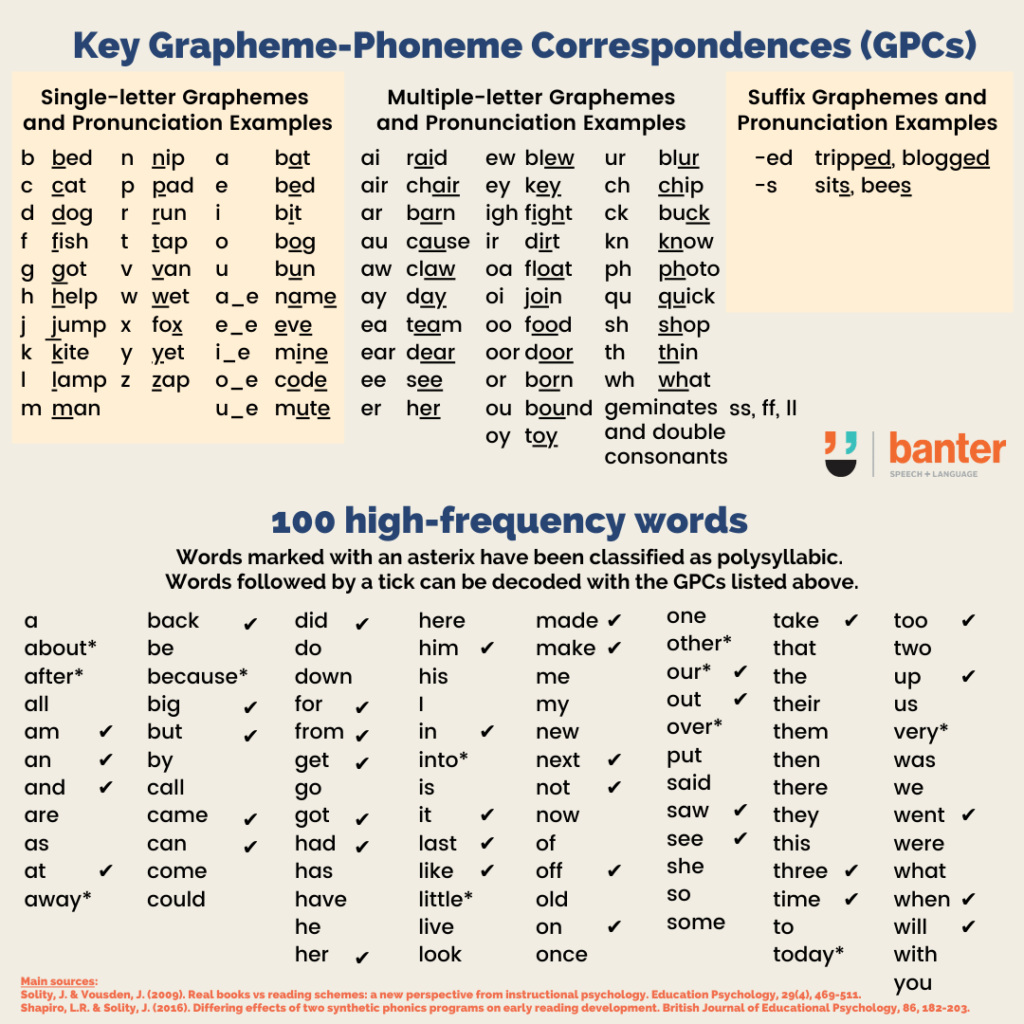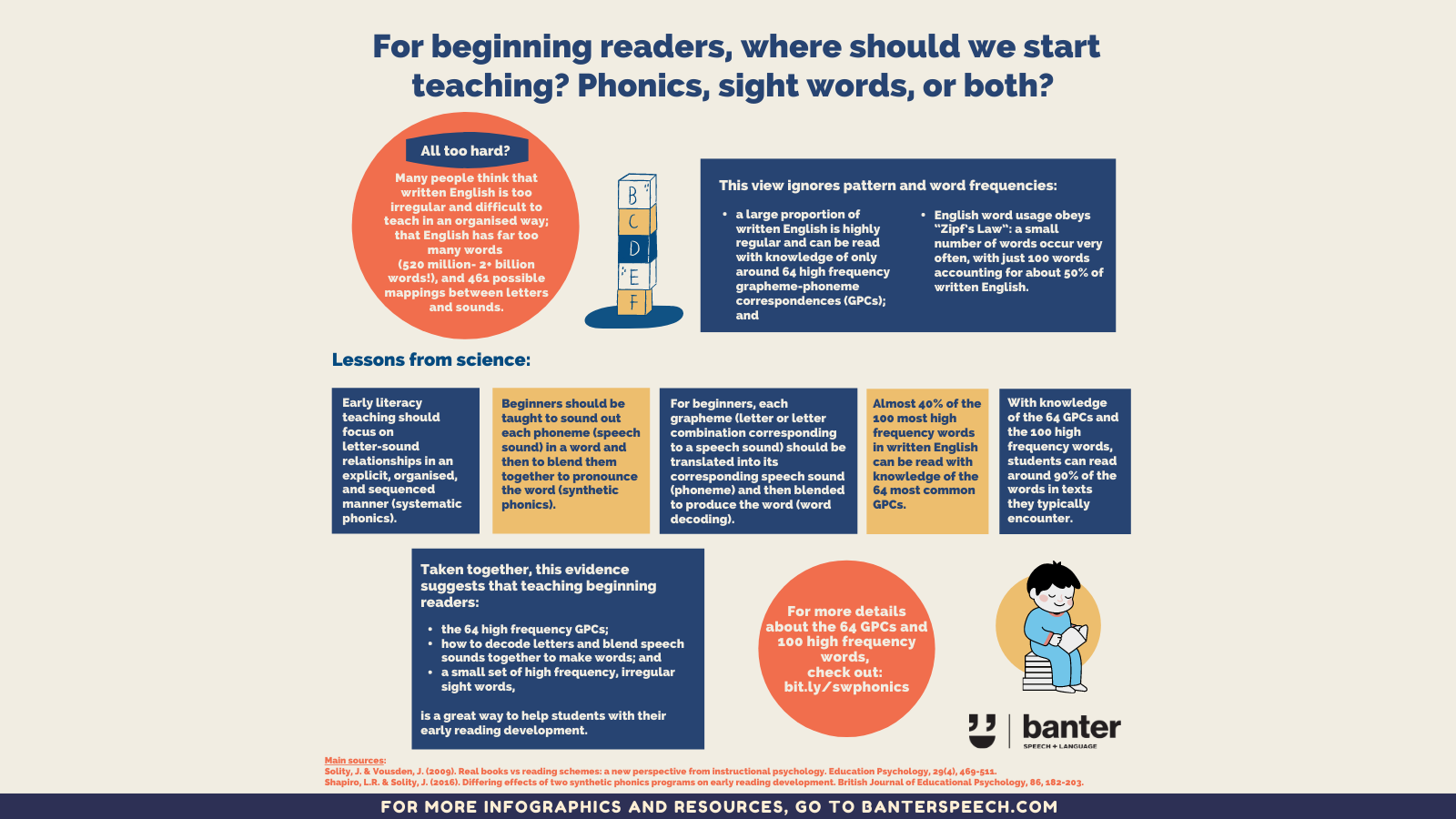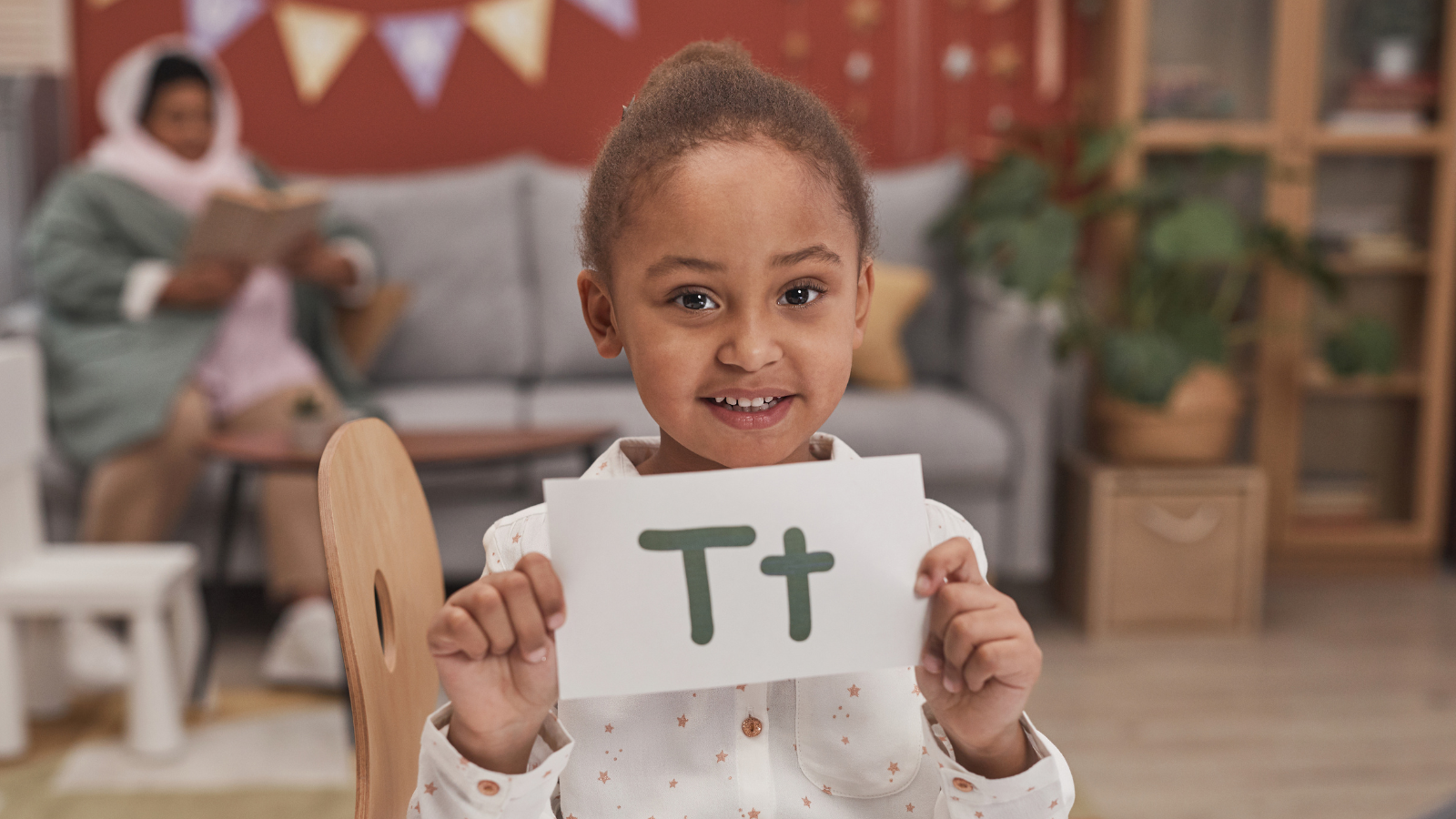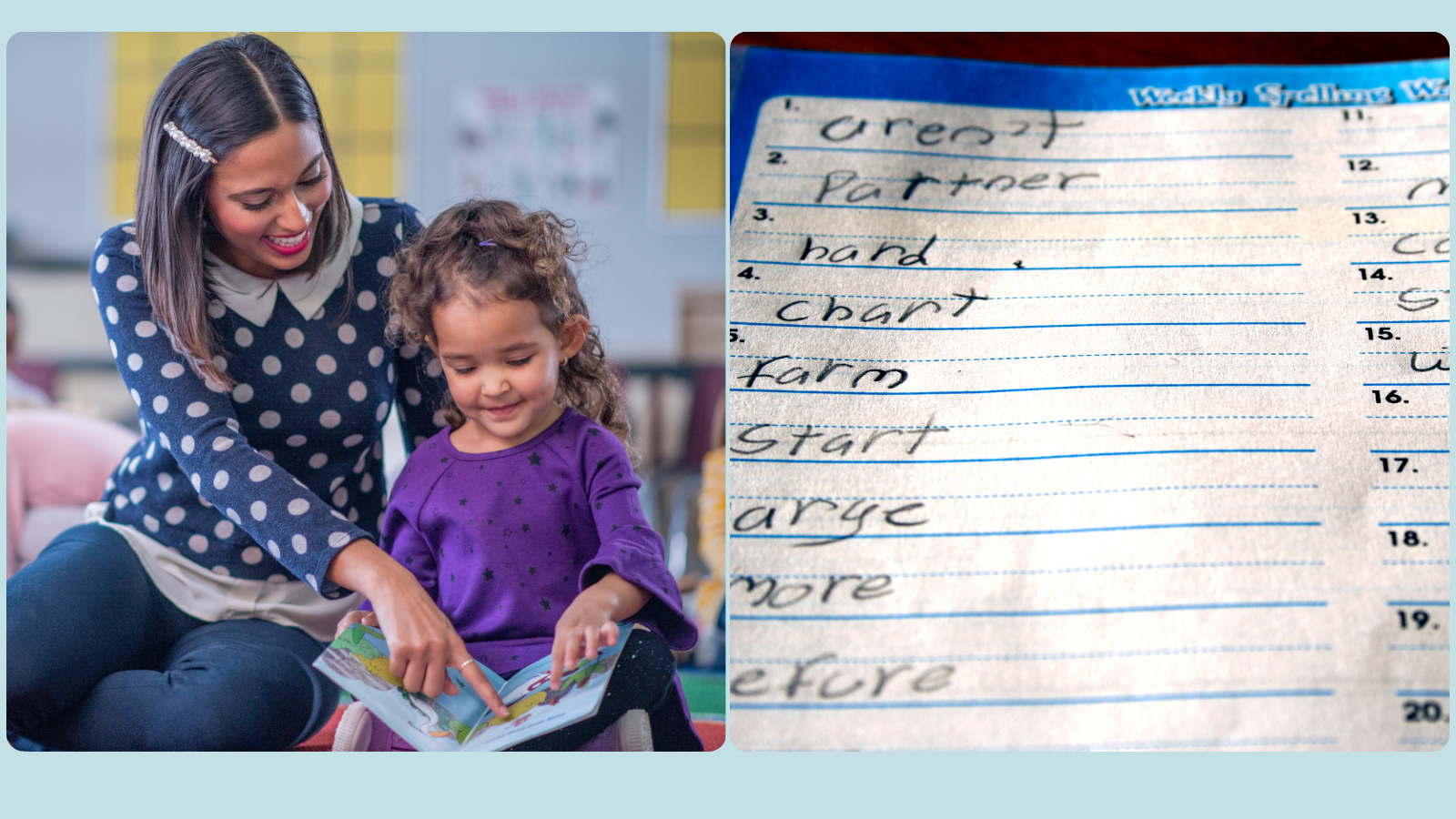For beginning readers, where should we start teaching? Phonics, sight words, or both?
Some people think that written English is too irregular and difficult to teach in an organised way, with far too many words (520 million – 2+ billion words!), and 461 possible mappings between letters and sounds.

This view ignores pattern and word frequencies:
- a large proportion of written English is highly regular and can be read with knowledge of only around 64 high frequency grapheme-phoneme correspondences (GPCs); and
- English word usage obeys “Zipf’s Law”: a small number of words occur very often, with just 100 words accounting for about 50% of written English.
Lessons from science:
- early literacy teaching should focus on letter-sound relationships in an explicit, organised, and sequenced manner (systematic phonics);
- beginners should be taught to sound out each phoneme (speech sound) in a word and then to blend them together to pronounce the word (synthetic phonics);
- for beginners, each grapheme (letter or letter combination corresponding to a speech sound) should be translated into its corresponding speech sound (phoneme) and then blended to produce the word (word decoding);
- almost 40% of the 100 most high frequency words in written English can be read with knowledge of the 64 most common GPCs; and
- with knowledge of the 64 GPCs and the 100 high frequency words, students can read around 90% of monosyllabic words used in written English.
Taken together, this evidence suggests that teaching beginning readers:
- the 64 high frequency GPCs;
- how to decode letters and blend speech sounds together to make words; and
- a small set of high frequency, irregular sight words,
is a great way to help students with their early reading development.
For more detail about the 64 GPCs and 100 high frequency words, see below.

For an accessible version of this infographic, here’s our video:
Main sources:
- Solity, J. & Vousden, J. (2009). Real books vs reading schemes: a new perspective from instructional psychology. Education Psychology, 29(4), 469-511.
- Shapiro, L.R. & Solity, J. (2016). Differing effects of two synthetic phonics programs on early reading development. British Journal of Educational Psychology, 86, 182-203.
Related articles and resources:
- Teaching the alphabet to your child? Here’s what you need to know
- Is your child struggling to read? Here’s what works
- Kick-start your child’s reading with speech sound knowledge (phonological awareness)
- ‘I don’t understand what I’m reading’ – reading comprehension problems (and what to do about them)
- The forgotten reading skill: fluency, and why it matters
- How to help your school-age child learn new words – the nuts and bolts of how I actually do it in therapy
- Too many children can’t read. We know what to do. But how should we do it?
- Is your child in Kindergarten or Year 1? 36 great FREE audiobooks to listen to at home or in the car
- Is your Kindy kid really reading? Find out with our 7 free mini-stories

Hi there, I’m David Kinnane.
Principal Speech Pathologist, Banter Speech & Language
Our talented team of certified practising speech pathologists provide unhurried, personalised and evidence-based speech pathology care to children and adults in the Inner West of Sydney and beyond, both in our clinic and via telehealth.








